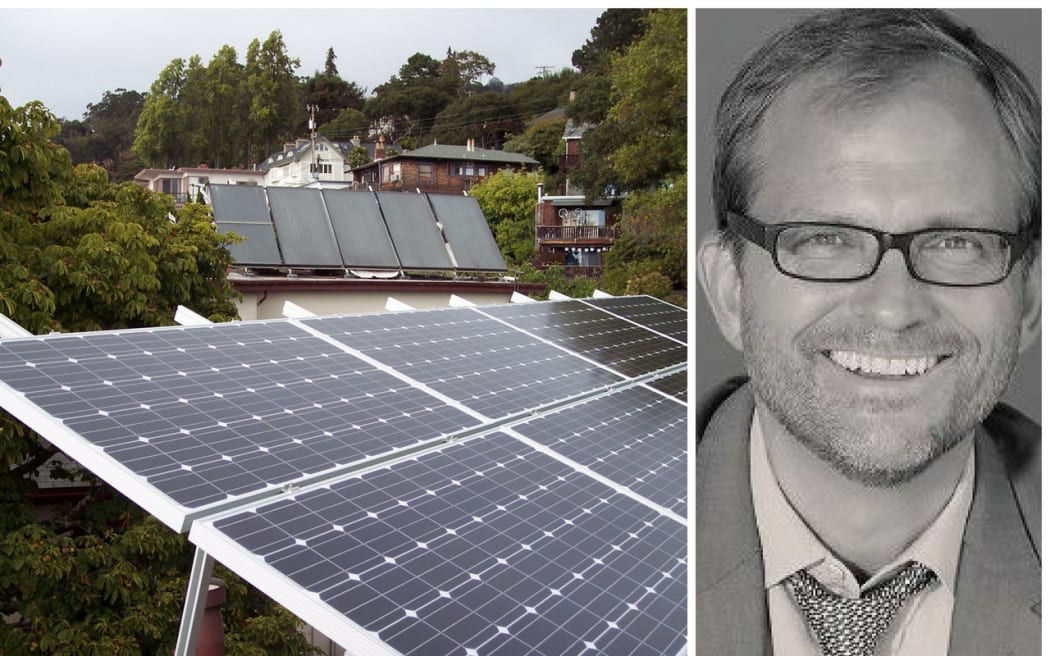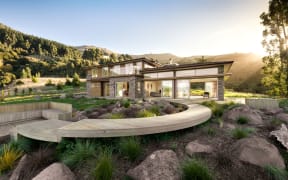New Zealand's building standards are lagging behind other OECD countries, according to one of America's leading authorities on clean energy, sustainability and social innovation.

Photo: Supplied
Matt Petersen is Los Angeles' first-ever Chief Sustainability Officer, the President and CEO of the Los Angeles Cleantech Incubator, the co-creator of Climate Mayors – a group of US mayors adopting the Paris Agreement in their cities – and the president of Global Green USA, which constructed affordable energy-efficient housing in the aftermath of Hurricane Katrina.
While New Zealand's current building code doesn't reflect the world’s best practice, change is possible, Petersen says.
In California, renewable energy is now mandatory and solar panels required for all new buildings in the state, he says.
“Since 1978, the state of California has put in place an energy code for all new buildings. That code gets updated every three years – it’s known as Title 24.”
As solar technology has dropped in price, it made sense to have panels on all new buildings with the aim of making them 'net carbon neutral', he says.
“Solar’s gone down from $8 a watt to 60 cents a watt for the panels alone. You still want to make sure you put solar up on the most energy-efficient building possible for an existing building.
“For a new construction, you’re looking at highly insulated walls, a tight building envelope including your windows so you don’t have any leakage … as well as an energy efficiency level. If you put on top of that solar you’re moving towards a carbon neutral home or building.”
Drought-plagued California has also made huge steps towards reducing its water use.
“If the only person that walks across a lawn is the one that mows it with a mower you should tear it up and put in drought-tolerant landscaping.”
The state is also re-using grey water and recycling sewage.
New Zealand would benefit from similarly bold moves, Petersen says.
“It’s an opportunity for this nation to lead globally, to lead by example in this time of climate crisis, as well.”
The government's KiwiBuild programme to build 100,000 affordable houses should embrace green principles at the outset, he says.
“Why build a home, particularly for our lower-income houses, that’s going to have high energy costs, that’s damp, that’s droughty, that then creates health problems, that then exacerbates existing health problems?”
New Zealand's current building codes are behind many other countries, he says.
“Yesterday at the New Zealand’s Green Building Council’s housing seminar I said: ‘Let’s just say that the builders and the regulators and the advocates come together and say ‘What if we went to net zero in three to five years?’ Which would be a huge leap, then let’s walk backwards from there to see how far can we get rather than just look at incremental progress.”
Embedding green principles into new builds does raise the cost up front, but the experience of New Orleans post-Katrina shows these costs come down, he says.
“Those first couple of [high code] houses were more expensive because the contractors weren’t familiar with it, the sub-contractors weren’t familiar with it and the regulators. But it got cheaper over time.”
Over time the “the payback is enormous”, Petersen says.
Matt Petersen recently spoke at the New Zealand Green Building Council housing summit in Auckland.
Bob Burnett: better homes for better health
Christchurch architect Bob Burnett founded the Superhome movement after his children got sick "bouncing around substandard rentals" after the Christchurch earthquake. Audio, Gallery


